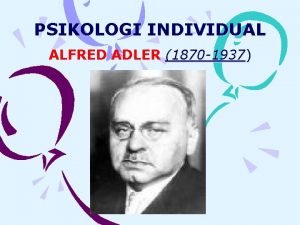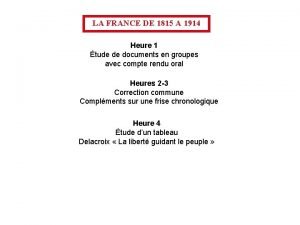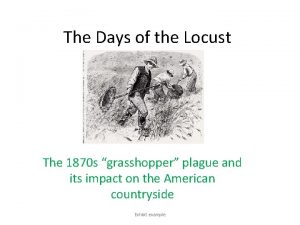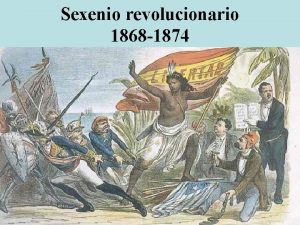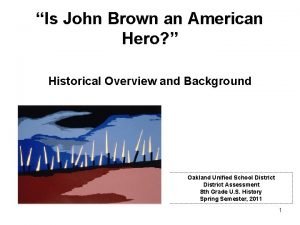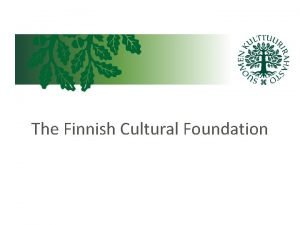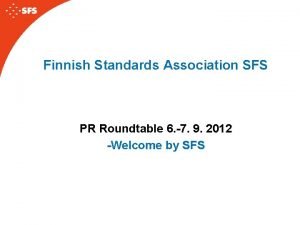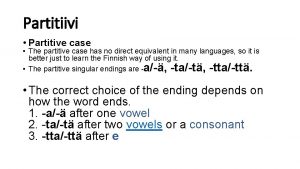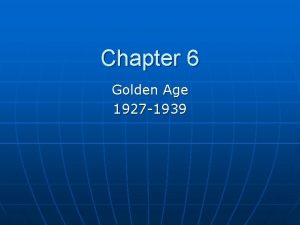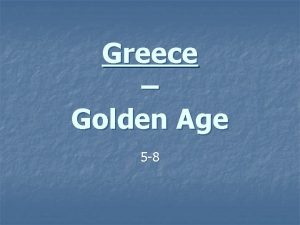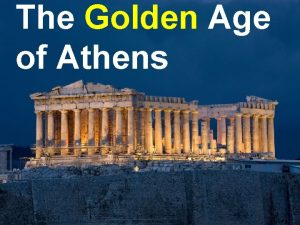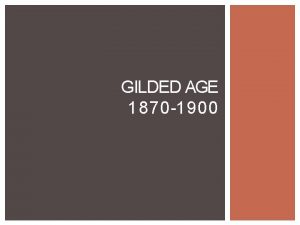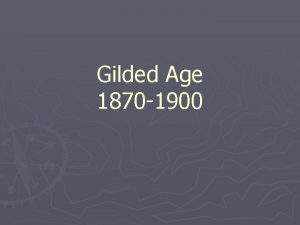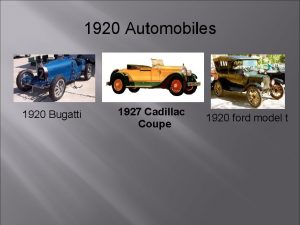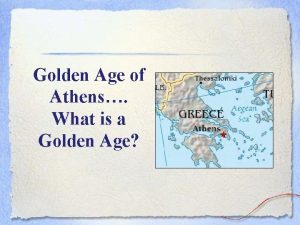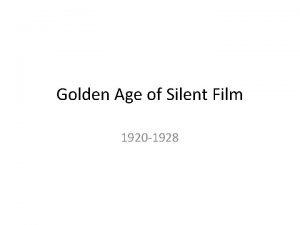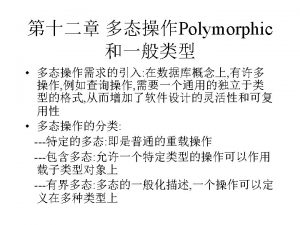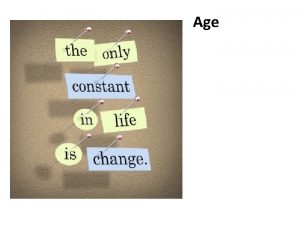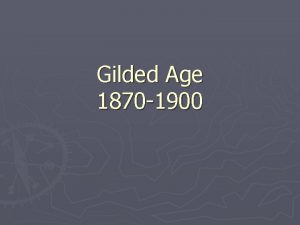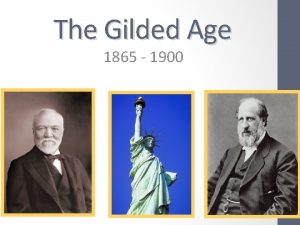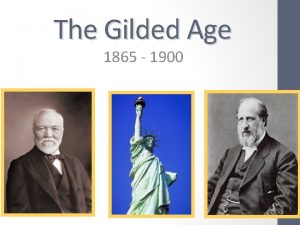The Golden Age of Finnish Art 1870 1920






















- Slides: 22

The Golden Age of Finnish Art 1870 -1920

The Background • The period 1870 -1920 was considered as the golden period where art in the form of impressionism, surrealism naturalism, portraiture, and symbolism was in demand. The artists who were successful in depicting all these forms were Ellen Thesleff, Albert Edelfelt, Akseli Gallen Kallela, Eero Järnefelt, Elin Danielson Gambogi and Helene Scherfbeck. These artists were all a part of the Finnish Art Society and contributed a lot to Finland’s art society

Some main facts on the Finnish History • The Swedish period prior to 1809, the Russian period from 1809 to 1917, and the independent period from 1917 to the present day. • When Sweden lost its position as a great power in the early 18 th century, Russian pressure on Finland increased, and Russia conquered Finland in the 1808– 1809 war with Sweden. • During the Swedish period, Finland was merely a group of provinces and not a national entity. It was governed from Stockholm, the capital of the Finnish provinces at that time. But when Finland was joined to Russia in 1809 it became an autonomous Grand Duchy. The Grand Duke was the Russian Emperor, whose representative in Finland was the Governor General.


Finland as a Grand Duchy of Russia • • Finland's highest governing body was the Senate, whose members were Finns. Matters pertaining to Finland were presented to the Emperor in St Petersburg by the Finnish Minister Secretary of State. This meant that the administration of Finland was handled directly by the Emperor and the Russian authorities were therefore unable to interfere. The enlightened Russian Emperor Alexander I, who was Grand Duke of Finland from 1809 to 1825, gave Finland extensive autonomy thereby creating the Finnish state. In 1812, Helsinki was made the capital of Finland, and the university, which had been founded in Turku in 1640, was moved to Helsinki in 1828. The Finnish national movement gained momentum during the Russian period. The Finnish national epic, the Kalevala, created by Elias Lönnrot, was published in 1835. The Language Decree issued in 1863 by Alexander II marked the beginning of the process through which Finnish became an official administrative language. Although only one-seventh of the Finnish population spoke Swedish as its first language, Swedish retained its dominant position until the beginning of the 20 th century.

NOUS, Alexandre Ier, par la grâce de Dieu Empereur et autocrate de toutes les Russies etc Grand-Duc de Finlande etc ne faire connaître: Que, de Providence de nous avoir mis en possession du Grand-Duché de Finlande, nous avons souhaité par les présentes de confirmer et de ratifier la religion et les lois fondamentales de la Terre ainsi que les droits et privilèges dont chaque classe dans la «Grand Duché en particulier, et tous les habitants en général, leur position haute ou basse, ont joui jusqu'ici conformément à la Constitution. Nous nous engageons à maintenir tous ces avantages et ferme et inébranlable des lois dans toute leur force. En foi de quoi Nous avons signé la présente loi d'assurance de notre propre main. Compte tenu de Borgå (Porvoo) sur la * 15/27 th de Mars 1809. L'original est signé sous la suprême propre main. ALEXANDER.

ME ALEXANDER I. , Jumalan Armosta, Kejsari ja Itsewaldias yli koko Ryssänmaan etc. Suuri Ruhtinas Suomen maasa etc. Teemme tiettäwäxi: Että sitte kuin ME Sen Korkeimman edeskatsomisesta olemma ottanet Suuren Ruhtinan maan Suomen hallituxemme ala, olemma ME tämän kautta tahtoneet wahvistaa ja kiinittää Maasa olevan Christillisen Opin ja perustuslait niin myös niitä wapauxia ja oikeuxia, kuin kukin Sääty nimitetysä Suuresa Ruhtinan maasa erinomattain, ja kaikki sen Asuwaiset yhteisesti, niin ylhäiset kuin alhaiset tähän saakka Constitutionin eli säättämisen jälkeen owat nautinneet: Lupaamme myös pitää kaikkia niitä etuja ja asetuxia wahwana ja järkähtämättämänä heidän täydellisä woimasansa. Suuremmaxi wisseydexi olemma ME tämän Wakutus-Kirjan MEIDÄN omalla kädellämme ala kirjoittaneet. Annettu Borgåsa sinä 15/27* päiwänä Maalis. Kuusa 1809. Pääkirja on korkiammasti omalla kädellä alakirjoitetu ALEXANDER.

Alexander I

• The Finnish Diet was convened in 1863 after a break of more than half a century. From then on, the Diet met regularly, and active legislative work in Finland began. The Conscription Act of 1878 gave Finland an army of its own. • The obliteration of "Finnish separatism, " a policy also known as Russification, started during the "first era of oppression" (1899– 1905) and continued during the second era (1909– 1917). The 1905 Revolution in Russia gave Finland a short breathing spell, while a new legislative body to replace the old Estates was created in 1906. At that time this was the most radical parliamentary reform in Europe, because Finland moved in one bound from a four estate diet to a unicameral parliament and universal suffrage. Finnish women were the first in Europe to gain the right to vote in parliamentary elections.

The Golden Age of Finnish Art • Over the period between 1880 -1910 is called The Golden Age of Finnish art. During that time, was based on Finnish art - it created its own national identity. At the same time, it also achieved a high international level and was followed by a current of European art movements. ’ • Artists began to describe the works of his homeland, its people, nature and history, they taught the Finns find their own beauty and unique characteristics. • The Golden Age of art told stories about Finland, its history and present day, including the rest of the world. Art was involved, when they wished to prove that Finland was a nation among other nations - Finland art paved the way for independence.

Akseli Gallen –Kallela: A boy and a crow - a small snapshot of crows lurking only boy in the house will be completed Sipi Tyrvää home parish. Sipi farm yard : a lot of items getting into the painting - the house the pigs, the day, grooms, dinner house, which enjoys the people - all they tell of the natural, and self-sufficient peasant life

Akseli Gallen-Kallela; A Boy and a Crow, 1884

The Mother of Lemminkäinen from Kalevala ( Our National book), 1897

Albert Edefelt, Luxenbourg Park, Paris, 1887

Boys playing at the beach, 1884

Ferdinand von Wright, Fighting Capercaillies , 1885

Helene Schjerfbeck: Dancing Shoes, 1882

Helene Schjerfbeck in 1882, painted by youth ”Tanssiaiskengät” book was sold nearly 3. 5 million pounds, or about 3. 9 million. Painting collection was acquired in the Nordic countries. Painting is one of the key works of art Schjerfbeck. So far, the most expensive painting was his Schjerfbeck in 1939 painted second version of the same painting

Hugo Simberg; A Wounded Angel, 1902

Pekka Halonen; Lessive sur la glace, 1900

Artistic styles; 1870 -1920 Symbolism: Simberg, Halonen Impressionism; Edefelt Karelianism; Gallen-Kallela National Romanticism; all the artists to some extent More about Finnish painters: http: //www. jmrw. com/Peintres/Horizon/index. htm

 Iron age dates
Iron age dates Iron age bronze age stone age timeline
Iron age bronze age stone age timeline Contoh striving for superiority
Contoh striving for superiority Maria montessori father
Maria montessori father Halyna kuzmenko
Halyna kuzmenko Frise chronologique 1815 à 1870
Frise chronologique 1815 à 1870 Frise chronologique de 1815 à 1870
Frise chronologique de 1815 à 1870 1870 locust plague
1870 locust plague 1870
1870 Over land by rail’, gustave dore, 1870
Over land by rail’, gustave dore, 1870 Rey de españa entre 1870 y 1873
Rey de españa entre 1870 y 1873 Strengths and weaknesses of the forster act 1870
Strengths and weaknesses of the forster act 1870 John brown the martyr currier and ives 1870
John brown the martyr currier and ives 1870 Golden ratio in the last supper
Golden ratio in the last supper Golden ratio and golden rectangle
Golden ratio and golden rectangle Finnish cultural foundation
Finnish cultural foundation Finland facts and information
Finland facts and information Sfs finland
Sfs finland Oats from finland
Oats from finland Finnish fruit plait
Finnish fruit plait Finnish korean war
Finnish korean war Partitive form
Partitive form Fineec
Fineec


